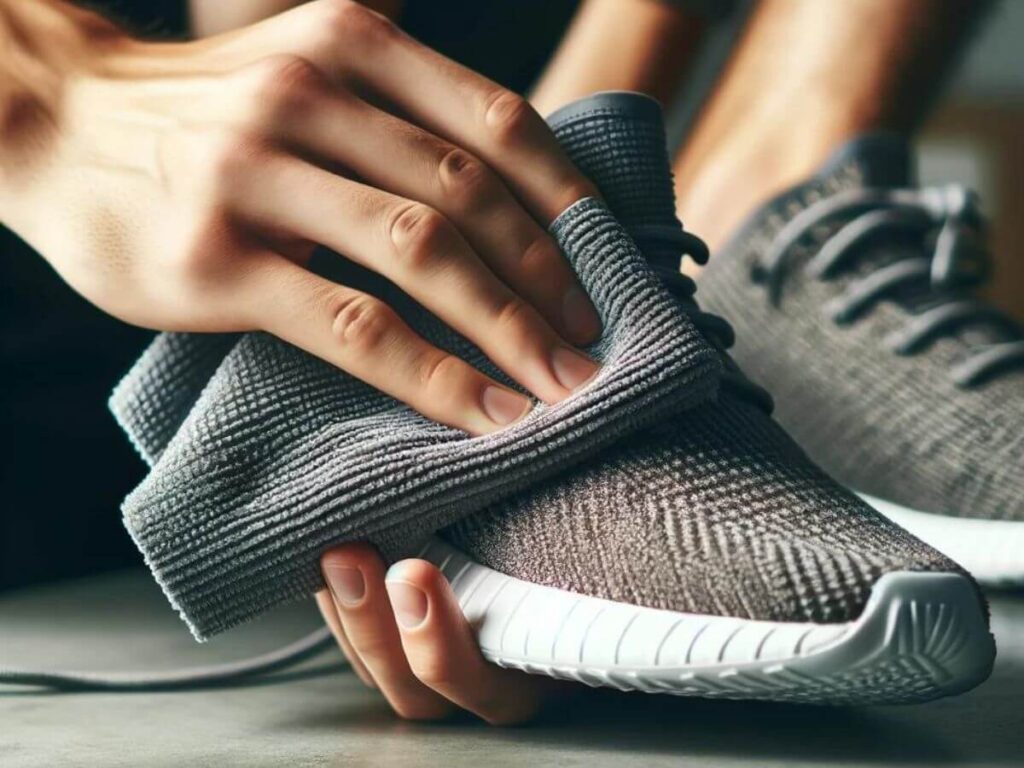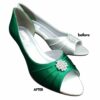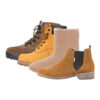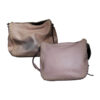When it comes to keeping your kicks in pristine condition, the devil is in the details—or in this case, in the cloth. This guide dives into the importance of using microfiber cloths for shoe cleaning and why they reign supreme in shoe care.
Introduction
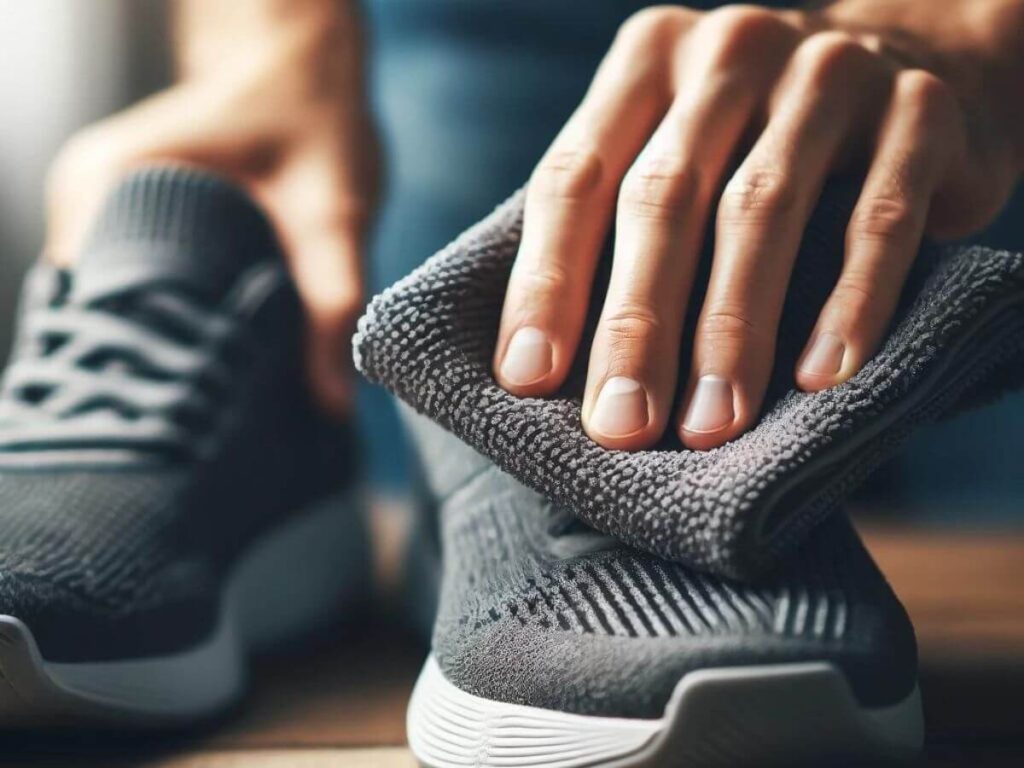
When it comes to maintaining your footwear, every detail matters. Using the correct cleaning accessories can greatly impact how well your shoes hold up over time. That’s why the spotlight in today’s discussion falls on an exceptionally effective tool: the microfiber cloth.
These cloths come with a host of benefits that make them superior to other types of cleaning materials. Whether you’re a sneakerhead looking to preserve your latest acquisition, or simply aiming to maintain your everyday footwear, understanding the significance of microfiber cloths is key. Let’s dive in and explore why they are essential for anyone serious about their shoe care game.
What is Microfiber?
At the core of effective shoe cleaning lies the unsung hero: the microfiber cloth. But what exactly makes this material so fitting for such a task? Let’s dive into the nitty-gritty of microfiber’s composition and its standout properties.
Microfiber cloths are crafted from ultra-fine fibers of synthetic materials, typically a blend of polyester and polyamide (nylon). These fibers are split during production to increase their surface area and create a net-like structure. Each strand is roughly 1/100th the diameter of a human hair, making these cloths exceptionally adept at trapping dirt, moisture, and even microscopic particles.
One of the most compelling aspects of microfiber is its propensity to attract and hold onto particles. Unlike traditional cleaning fabrics, which may merely push dirt around, microfiber cloths act more like a magnet. Thanks to their positively charged fibers, they attract the negatively charged dirt and oil that often find refuge on your footwear. This feature not only enhances their cleaning prowess but also bolsters their reputation as the go-to choice for maintaining pristine shoes without causing damage or undue wear.
Understanding the unique interplay of physics and fabric technology behind microfiber can shed light on why this material is particularly suited to shoe care—and many other cleaning tasks beyond that. With its combination of softness, durability, and electrostatic properties, microfiber stands in a league of its own.
Benefits of Using Microfiber Cloths for Shoe Cleaning
When it comes to effectively sprucing up your shoes without causing damage, microfiber cloths come out as champions. Let’s break down why using these cloths can really level up your shoe care routine.
First off, microfiber cloths are incredibly efficient at picking up dirt and grime. Thanks to their unique composition—typically made from a blend of polyester and polyamide—these fibers are much finer than a human hair. This results in creating a larger surface area that can trap dirt, dust, and even microscopic bacteria more effectively than standard cloths. So, when you’re giving your shoes a once-over, microfiber grabs more with less effort, making your cleaning process both thorough and less labor-intensive.
But the benefits don’t stop at just superior cleaning. Microfiber cloths are also gentler on your shoes. Traditional cleaning rags can be harsh on sensitive materials such as suede or mesh. Microfiber, on the other hand, manages to clean effectively without leaving scratches or scuffs. This means you can keep your favorite kicks looking new for longer, preserving not only their appearance but potentially their lifespan as well.
Furthermore, for anyone worried about the finish on their polished or specialty leather shoes, microfiber is a safe choice. It won’t degrade the finish as some harsher materials might. This aspect alone makes it a go-to for shoe aficionados who are particular about maintaining the sheen and structural integrity of their shoes.
Conclusively, using microfiber cloths for shoe cleaning not only enhances the cleanliness of your footwear but also protects against potential material wear and tear, ensuring your shoes look better and last longer. Let’s be honest, who doesn’t want that?
Comparison of Cleaning Cloths for Footwear: Microfiber vs Cotton
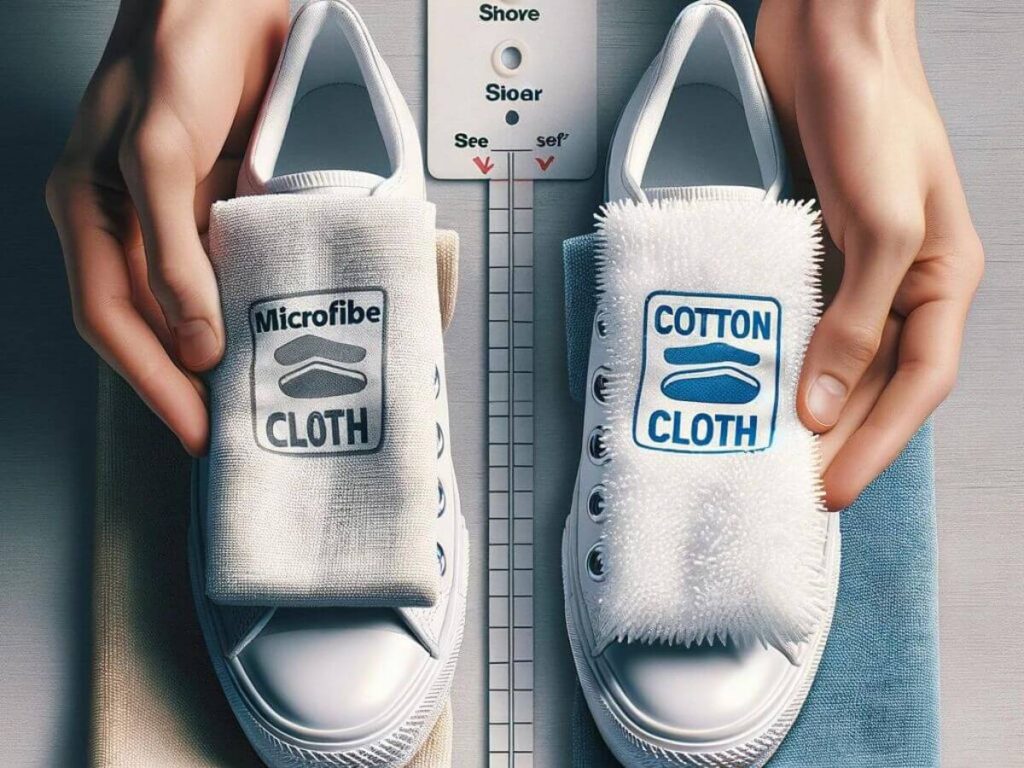
When it comes to keeping your beloved shoes in pristine condition, not all cleaning cloths are created equal. It’s important to understand the distinctions between microfiber and traditional materials like cotton, as this can greatly influence your shoe cleaning outcomes.
Benefits of Microfiber Cloths
- Material Composition: Microfiber cloths are made from a blend of polyester and polyamide, which enables them to attract and hold onto dirt and grime much more efficiently than cotton.
- Efficiency in Cleaning: The fibers in microfiber are split into ultra-fine strands, much thinner than human hair. This unique structure allows microfiber cloths to pick up microscopic particles of dirt and absorb liquids far better than other materials.
- Durability: Microfiber is also known for its durability. These cloths can be washed and reused numerous times without losing their cleaning effectiveness, making them a more eco-friendly option as they do not require frequent replacement.
- Gentleness on Materials: Microfiber cloths are gentle on all types of shoe materials—from leather to synthetic mesh—ensuring the integrity of the fabric is not compromised during cleaning.
Comparing with Cotton
- Historical Use: Cotton is a natural fiber that has been used for centuries in various cleaning tasks. While it is absorbent, its effectiveness in trapping particles is less compared to microfiber.
- Potential for Damage: According to insights from footfitter.com, cotton cloths can push dirt and dust around rather than picking it up. This may lead to less effective cleaning and even the risk of scratching your shoes if the dirt is not adequately removed.
- Wear and Lint Issues: Cotton cloths tend to wear out more quickly and may leave lint behind, which could adhere to the surfaces of leather or suede shoes.
Conclusion
Ultimately, the choice between microfiber and cotton depends on the specific needs of your footwear and personal preference for sustainable options. However, for those seeking a versatile, effective, and gentle option for maintaining their shoes in top condition, microfiber cloths undoubtedly have the edge.
How to Use Microfiber Cloths for Optimal Shoe Care
Using microfiber cloths for shoe care isn’t just tossing a cloth at your shoes and hoping for the best. There’s a proper technique that, if followed, can elevate the cleanliness and longevity of your beloved kicks. Here’s a straightforward, no-nonsense guide on how to effectively use microfiber cloths to keep your shoes looking their best:
Step 1: Dry Wipe First
Start with a dry microfiber cloth to wipe down the shoes. This initial step removes loose surface dirt and dust, preventing any scratches or damage during the wet cleaning process. Use gentle, sweeping motions and ensure you get into all the crevices and folds of the shoe.
Step 2: Prepare Your Cleaning Solution
Mix a mild, shoe-friendly detergent with water or use a specialized shoe cleaner. Make sure it’s not too harsh to preserve the quality and color of your shoes. Dampen another clean microfiber cloth in this solution—wring it out well so it’s damp, not dripping.
Step 3: Wipe Down
Gently wipe the shoe with the dampened microfiber cloth. Start from the top and work your way down. For stubborn stains or dirt buildup, apply a bit more pressure and use a circular motion. Remember, the goal is meticulous cleaning without damaging the shoe.
Step 4: Focus on the Details
For tougher spots like the soles and any textured surfaces, consider using a softer brush or a corner of the microfiber cloth to dig deep into the crevices. However, ensure that you’re being as gentle as possible to avoid wear and tear.
Step 5: Final Rinse and Dry
Once the shoe is clean, take another clean microfiber cloth, dampen it with just water, and go over the shoe to remove any soap residue. Following that, use a dry microfiber cloth to pat down the shoes, absorbing any remaining moisture. Air-dry the shoes completely before storing or wearing them.
Maintenance of the Microfiber Cloth
After the cleaning session, it’s crucial to keep your microfiber cloths in good shape. Rinse them thoroughly with clean water to remove any dirt and cleaning solution residues. Allow the cloth to air dry or tumble dry on low heat, and store it in a clean, dry place. Avoid using fabric softeners, as they can clog the fibers and reduce the cloth’s effectiveness.
By following these simple steps, you’re not just cleaning your shoes; you’re giving them a comprehensive spa day that keeps them in top-notch condition. This method doesn’t only apply aesthetics—it extends the life of your shoes, ensuring that they continue to support and style you for many outings to come.
Common Mistakes to Avoid When Cleaning Shoes
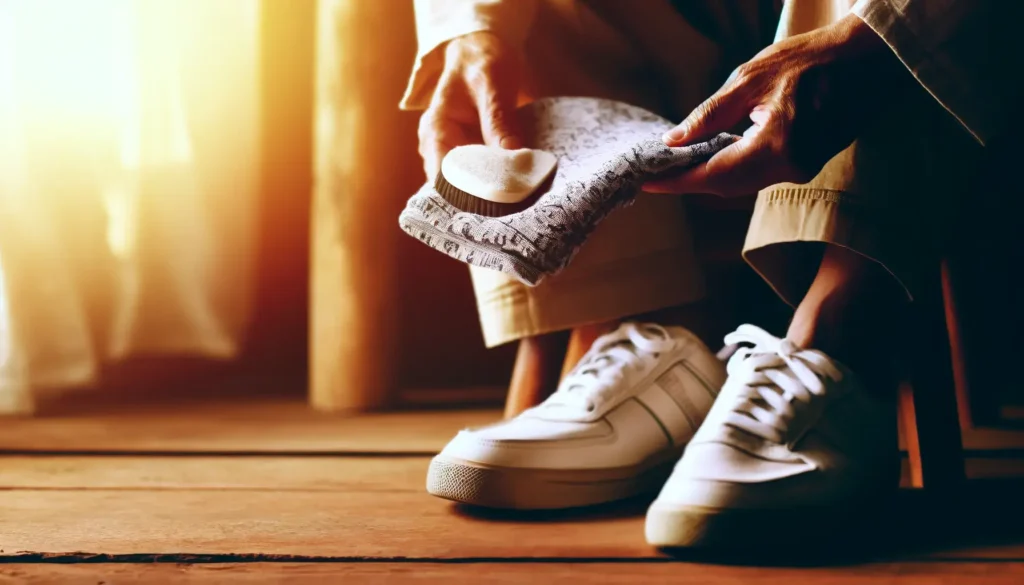
Cleaning your shoes might seem straightforward, but a few common slip-ups can turn a simple spruce-up into a full-blown footwear faux pas. Over at Shoewash Supreme’s blog, we’ve outlined several typical cleaning blunders, and here, we’ll explain how microfiber cloths can help dodge these mishaps.
Using the Wrong Cleaners
First off, a big no-no many commit is using harsh chemicals or the wrong type of cleaners, which can damage sensitive shoe materials. The beauty of microfiber cloths lies in their ability to clean effectively with just water or mild detergents, reducing the risk of harming your cherished Chucks or beloved brogues.
Over-Saturating with Water
Another frequent mistake is over-saturating the shoe with water, which can warp the shape and degrade the material. Microfiber’s high absorbency means less water is needed to get the job done, keeping your shoes in shape and drying faster.
Scrubbing Too Hard
Scrubbing too hard is yet another common error; vigorous brushing can wear down the surface, especially on more delicate materials like suede or mesh. The soft yet durable structure of microfiber cloths allows for gentle yet effective cleaning, lifting dirt and stains without the elbow grease that can lead to tears or fraying.
Improper Drying Techniques
Lastly, many forget to properly dry their shoes, leading to mold or unpleasant odors. Microfiber cloths not only help clean but also are excellent at drying, wicking away moisture quickly and efficiently from every nook and cranny, helping to prevent any soggy aftermath.
By switching to microfiber cloths and being mindful of these common cleaning mistakes, you’re not just caring for your shoes; you’re extending their lifespan and keeping them looking their best.
The Environmental Impact of Microfiber Cloths

When we talk about cleaning, especially something as frequent as shoe care, it’s crucial to consider not just how effectively something works, but also the impact it has on our planet. Microfiber cloths, in this context, offer a compelling story.
First off, microfiber cloths are incredibly durable. Unlike paper towels or cheaper quality cloths, microfiber can be washed and reused hundreds of times. This longevity drastically reduces the need to constantly buy new cloths or toss out old ones, cutting down on landfill waste. Reducing waste is more than just good housekeeping; it’s a fundamental aspect of reducing our environmental footprint.
But it’s not all perfect. It’s important to note that microfiber is made from synthetic materials, typically a blend of polyester and nylon—plastics, essentially. When washed, these fibers can shed minutely, contributing to the microplastics problem in our oceans. However, the good news is that this can be mitigated. Using special laundry bags designed to catch these fibers or investing in a high-efficiency washing machine are ways to help reduce this impact.
Moreover, the efficiency of microfiber in cleaning and its ability to do so with less water and fewer chemical cleaners than other cloths further enhances its environmental appeal. Less water and chemical usage not only mean lower environmental impact but can also lead to significant household savings over time.
In essence, while no product is without its flaws, microfiber cloths offer a strong, environmentally friendly option for those looking to keep their kicks clean without kicking the planet. Their durability and efficiency present a compelling argument for anyone considering their environmental footprint without wanting to compromise on cleanliness.
Conclusion
To wrap it up, the importance of using microfiber cloths for shoe cleaning are clear and compelling. They not only enhance the cleaning process but they also do so while being gentle on your shoes. This is crucial for preserving the lifespan and appearance of your footwear, whether they’re casual sneakers or high-end leather loafers.
Microfiber cloths stand out from other materials like cotton due to their fine threads, which ensure a deeper clean without the risk of damaging the shoe’s surface. They’re also reusable and durable, making them a more eco-friendly option compared to disposable wipes that contribute to landfill waste. By choosing microfiber, you’re not just opting for an effective cleaning tool; you’re also making a decision that benefits the environment.
We encourage both new and seasoned shoe enthusiasts to consider integrating microfiber cloths into their shoe care routines. Whether you’re sprucing up a cherished pair or doing regular maintenance, these cloths can elevate your cleaning game massively. Remember, in the world of shoe care, the right tools not only simplify your efforts but also amplify the results. Happy cleaning!

